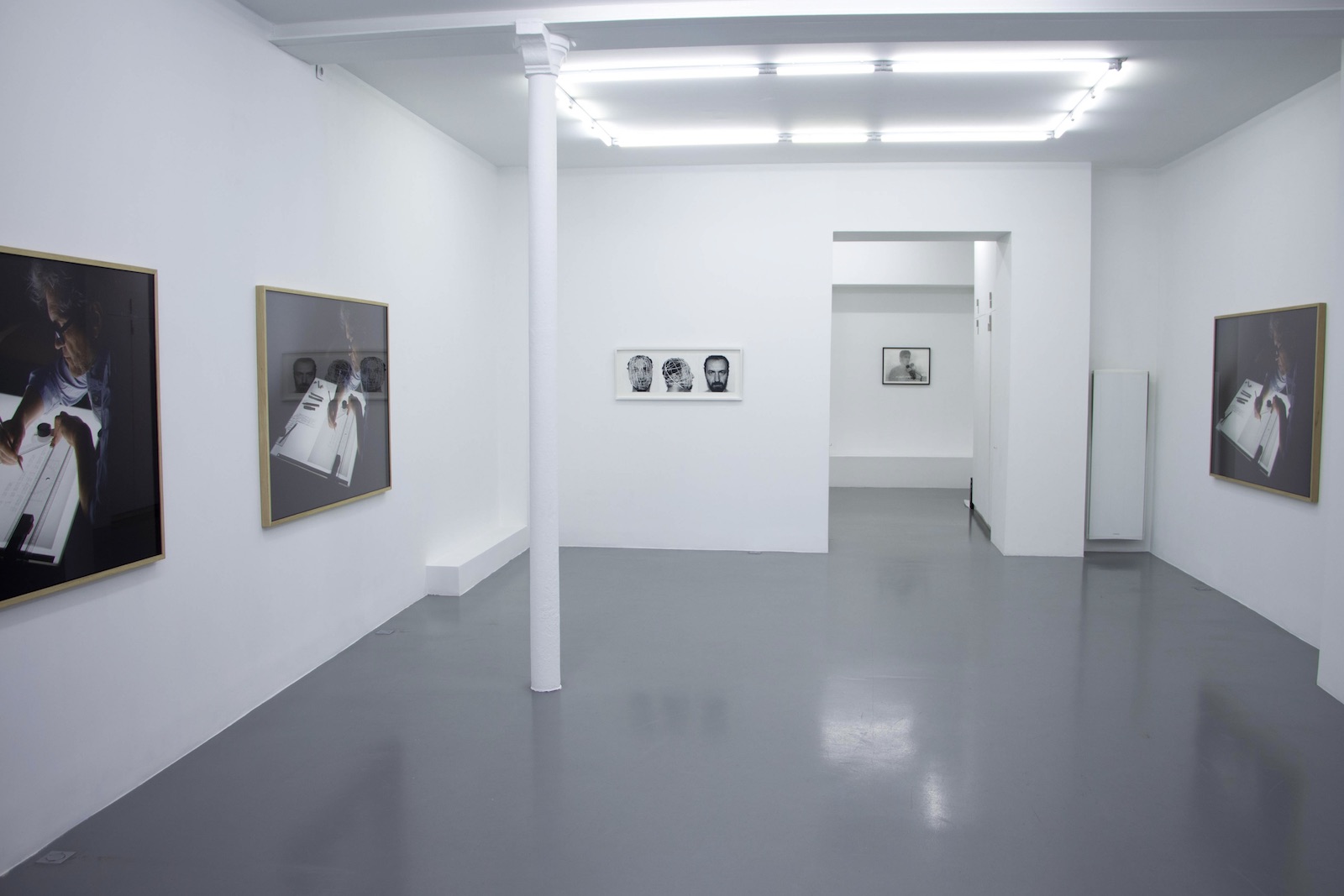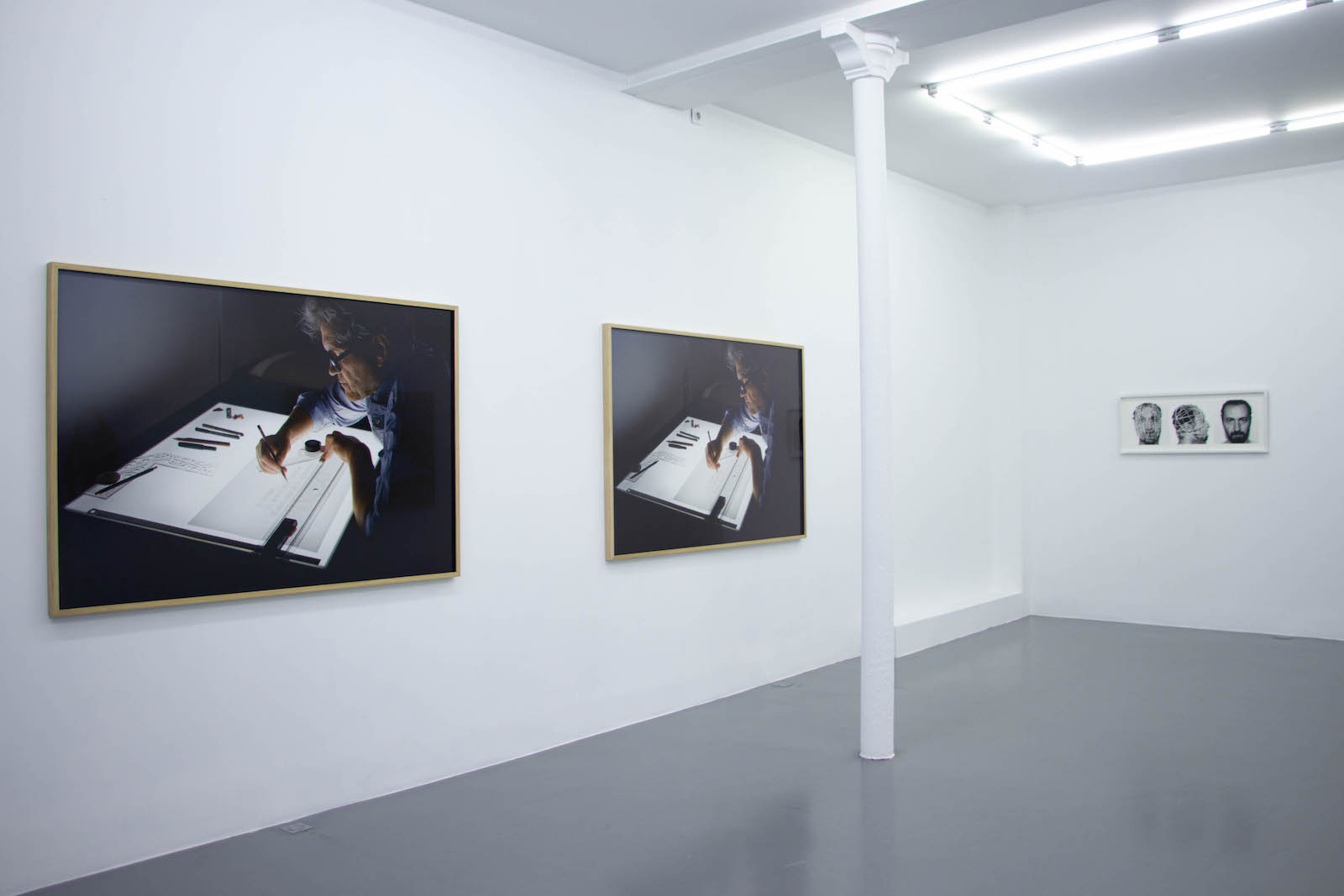Figures
6th November - 4th December 2021
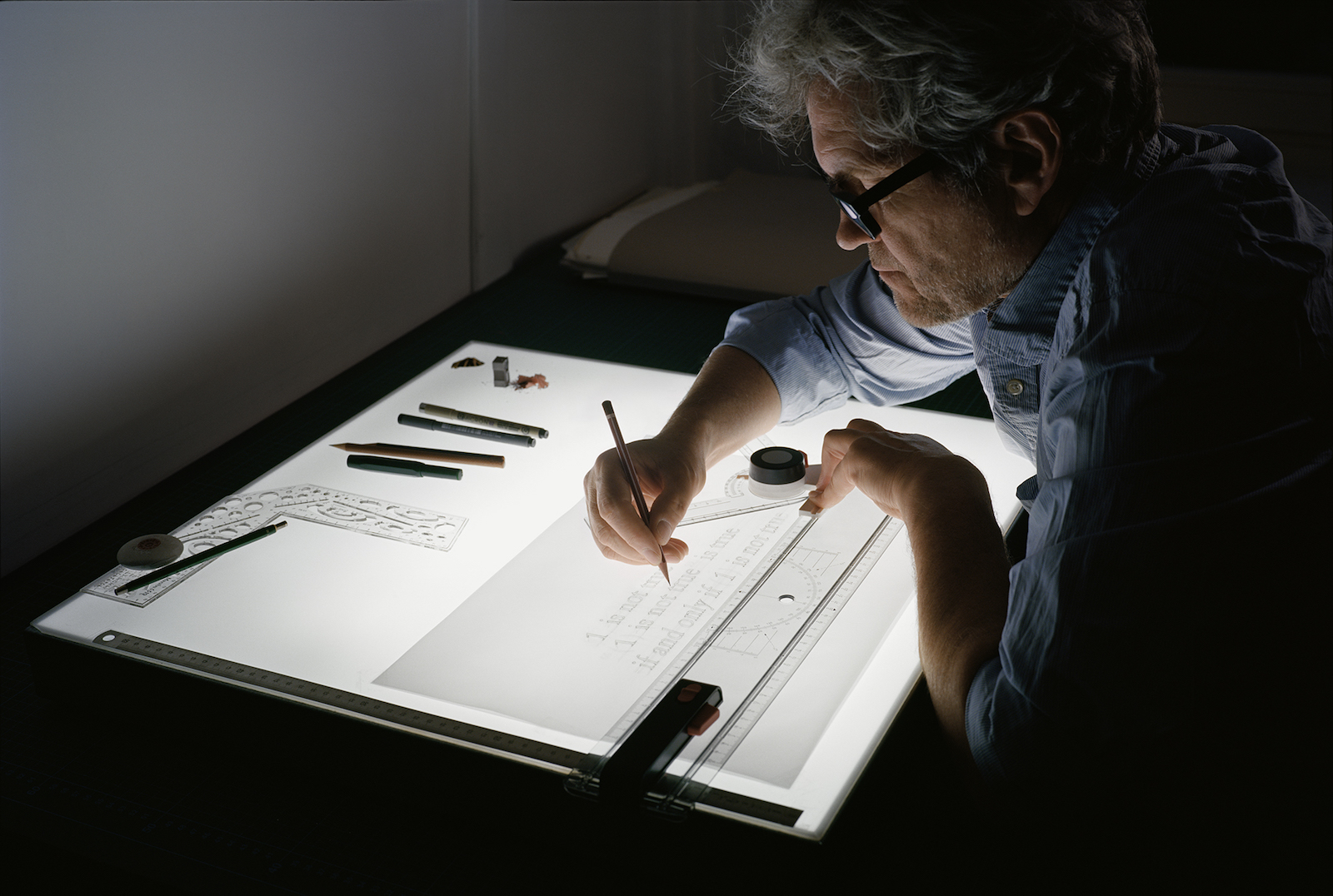
Pigment print
Image: 63 x 42 inches
Revision Theory of Truth is a series of photographs in which a man sits at a light box where he stencils text. The photographs seem almost identical, except that the man's hand adopts a slightly different position and the text changes. The inscribed sentences invite us to question the notion of truth and propel us on a Möbius strip, according to the model of the famous paradox of the liar: if I affirm that I lie, do I tell the truth?

Pigment print
Image: 63 x 42 inches
Revision Theory of Truth is a series of photographs in which a man sits at a light box where he stencils text. The photographs seem almost identical, except that the man's hand adopts a slightly different position and the text changes. The inscribed sentences invite us to question the notion of truth and propel us on a Möbius strip, according to the model of the famous paradox of the liar: if I affirm that I lie, do I tell the truth?
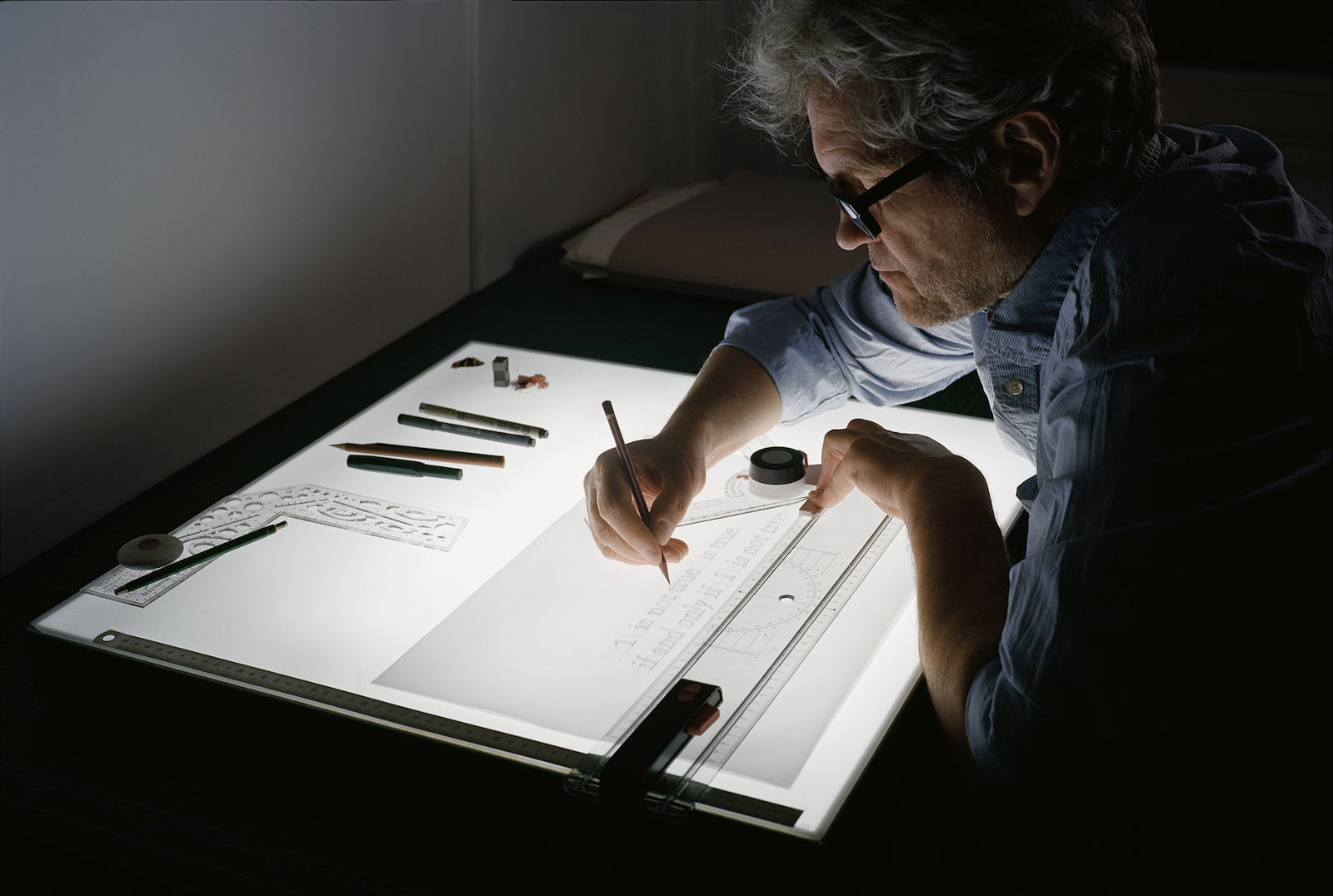
Pigment print
Image: 63 x 42 inches
Revision Theory of Truth is a series of photographs in which a man sits at a light box where he stencils text. The photographs seem almost identical, except that the man's hand adopts a slightly different position and the text changes. The inscribed sentences invite us to question the notion of truth and propel us on a Möbius strip, according to the model of the famous paradox of the liar: if I affirm that I lie, do I tell the truth?
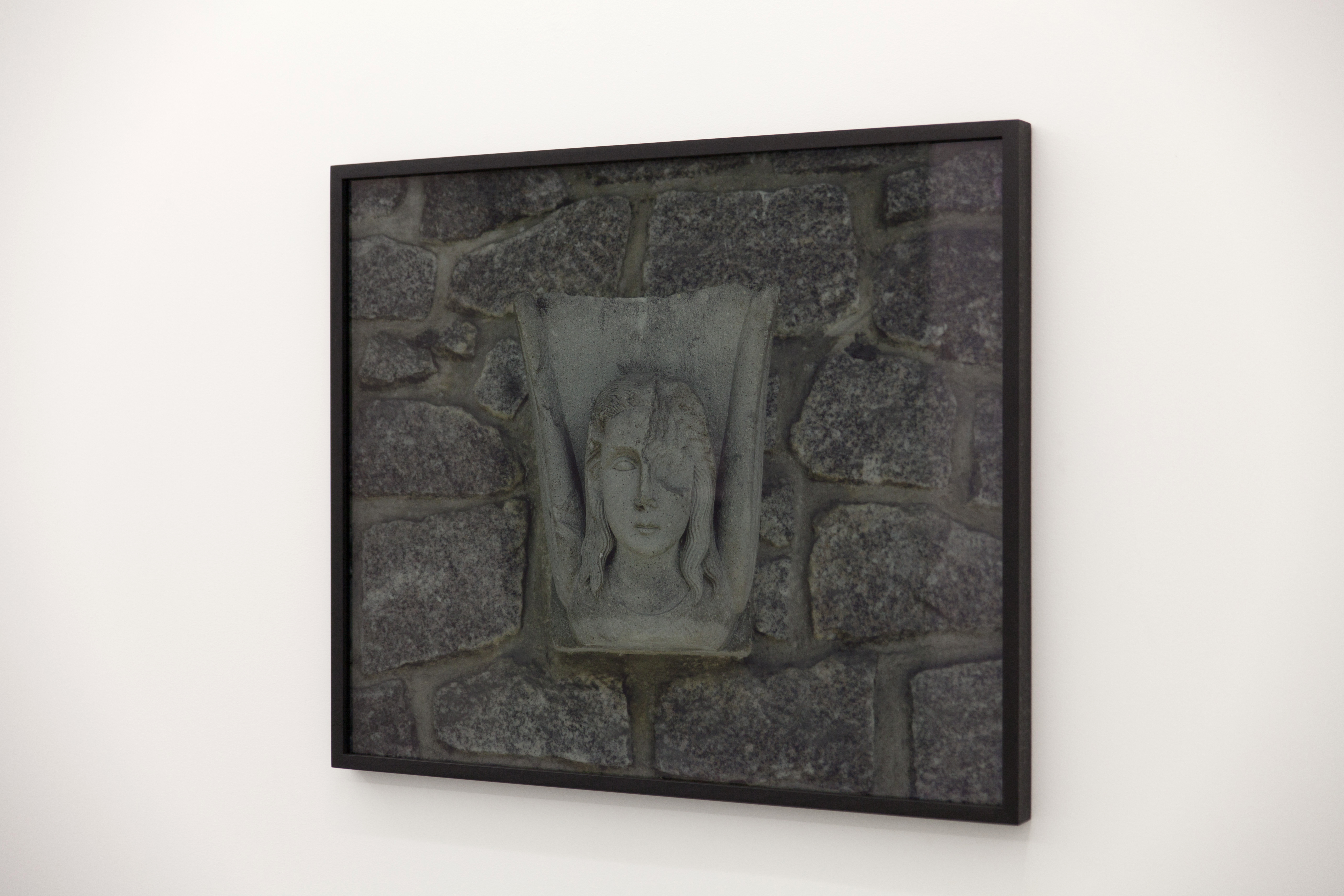
Image: 60 x 71,5 cm
L'Ange de Nagasaki is a photography of the statue damaged by the atomic bomb dropped on Nagasaki 9 August 1945. In the past it made up an integral part of the Urakami cathedral. This angelic face was offered as a symbol of peace by the Japanese government to UNESCO in 1976. It was subsequently placed in the institution's gardens in Paris. The original statue is therefore a document and a monument at once in that it was a direct witness to the atomic cataclysm and in the fact that the scars related to this event confer to it a powerful symbolic significance. A monument then which remembers itself.
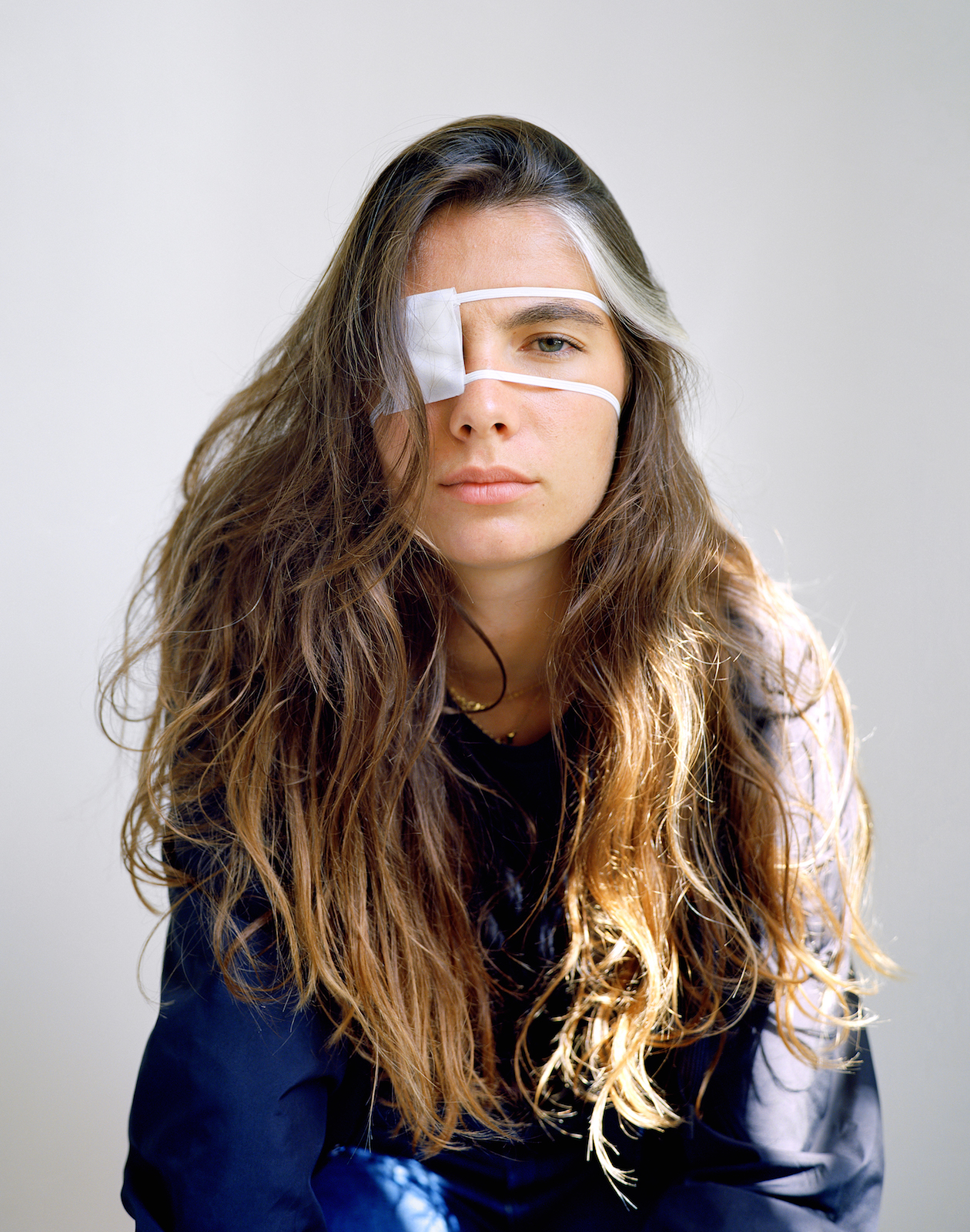
Color photograph
Image: 31,5 x 24, 8 inc
Frame: 32,8 x 26 inch
Human being perceives relief and locates himself in space thanks to the coordination of his two eyes. This simple assertion is at stake in the Télé-vision series, which is conceived as a representation of seeing in the form of a photographic portrait. In the manner of a stereoscopic vision, in which the combination of two images is essential to the apprehension of space and volume. Each photograph embodies the point of view of a single eye, both for the viewer and the model. The entire series thus proposes four similar but unique portraits, presented in pairs, in the image of the gaze that is cast upon them. By placing the viewer in front of the decomposition of the gaze, the series underlines the way in which the omnipresence of images modifies our relationship to the world. The transmission of sensitive experience through words is slowly replaced by a truncated two-dimensional world constructed by images.
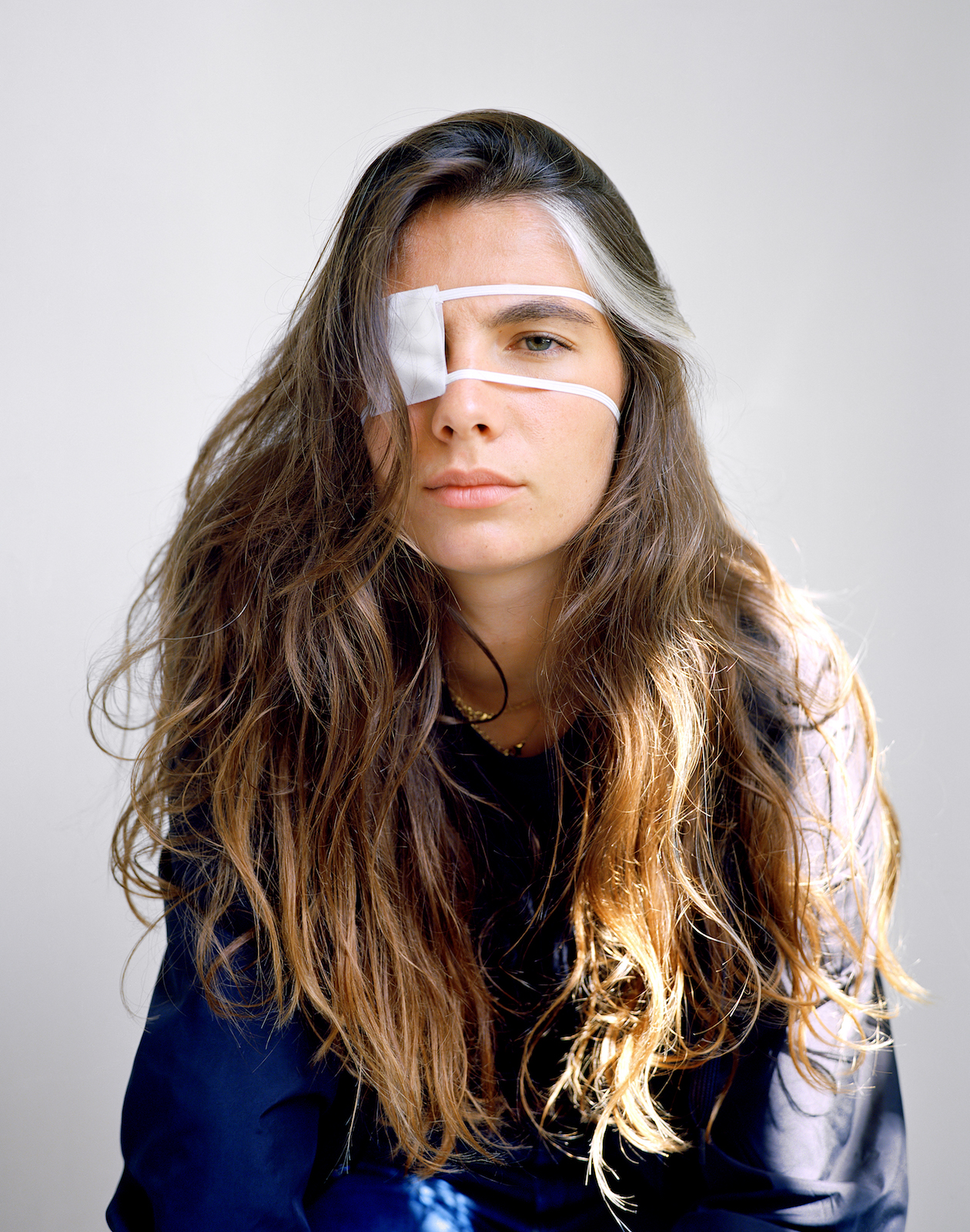
color photograph
Image: 31,5 x 24, 8 inc
Frame: 32,8 x 26 inch
Human being perceives relief and locates himself in space thanks to the coordination of his two eyes. This simple assertion is at stake in the Télé-vision series, which is conceived as a representation of seeing in the form of a photographic portrait. In the manner of a stereoscopic vision, in which the combination of two images is essential to the apprehension of space and volume. Each photograph embodies the point of view of a single eye, both for the viewer and the model. The entire series thus proposes four similar but unique portraits, presented in pairs, in the image of the gaze that is cast upon them. By placing the viewer in front of the decomposition of the gaze, the series underlines the way in which the omnipresence of images modifies our relationship to the world. The transmission of sensitive experience through words is slowly replaced by a truncated two-dimensional world constructed by images.
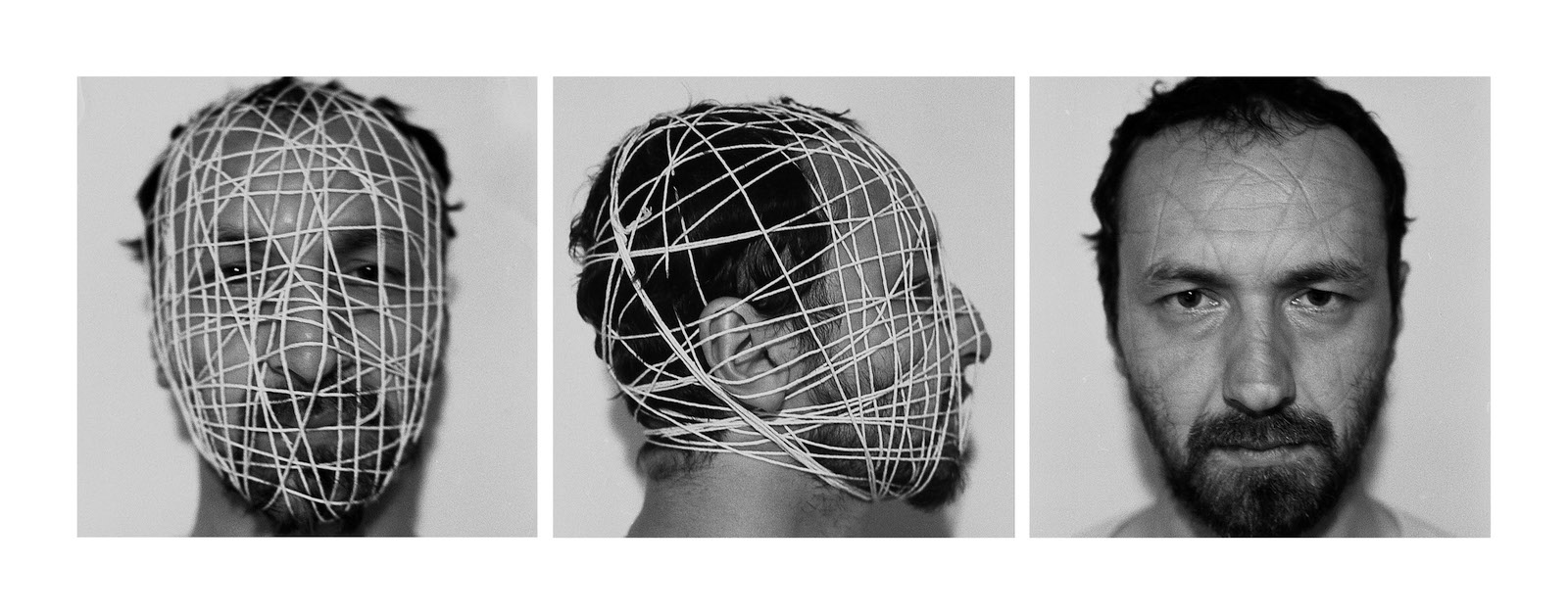
Black and white gelatin silver prints - Triptych
Image: 30 x 30 cm (each)
Frame: 42 x 104 x 3 cm
The "Masks" series is marked by a strong political dimension, staging symbolically the constraints generated against Romanian intellectuals in times of dictatorship, especially artists.
Mask # 2 suggests a reflection about the final image, here by the marks left on the skin after the removal of a tightly wrapped string. This political work, though without being a program of dissidence, evokes the muzzling, the oppression undergone during a period of censorship and extreme surveillance.

16,5 x 23 cm (each)
Curtain #2 (performance project) is a photograph of a performance, in which the artist intervened retrospectively. It goes along with a performance and intervention series realized on the seaside, exploring gestures symbolic and the connection with reality. In this photograph, painted curtains come on the top of the represented action, creating the illusion, both symbolical and political, of opening or closing on the horizon.
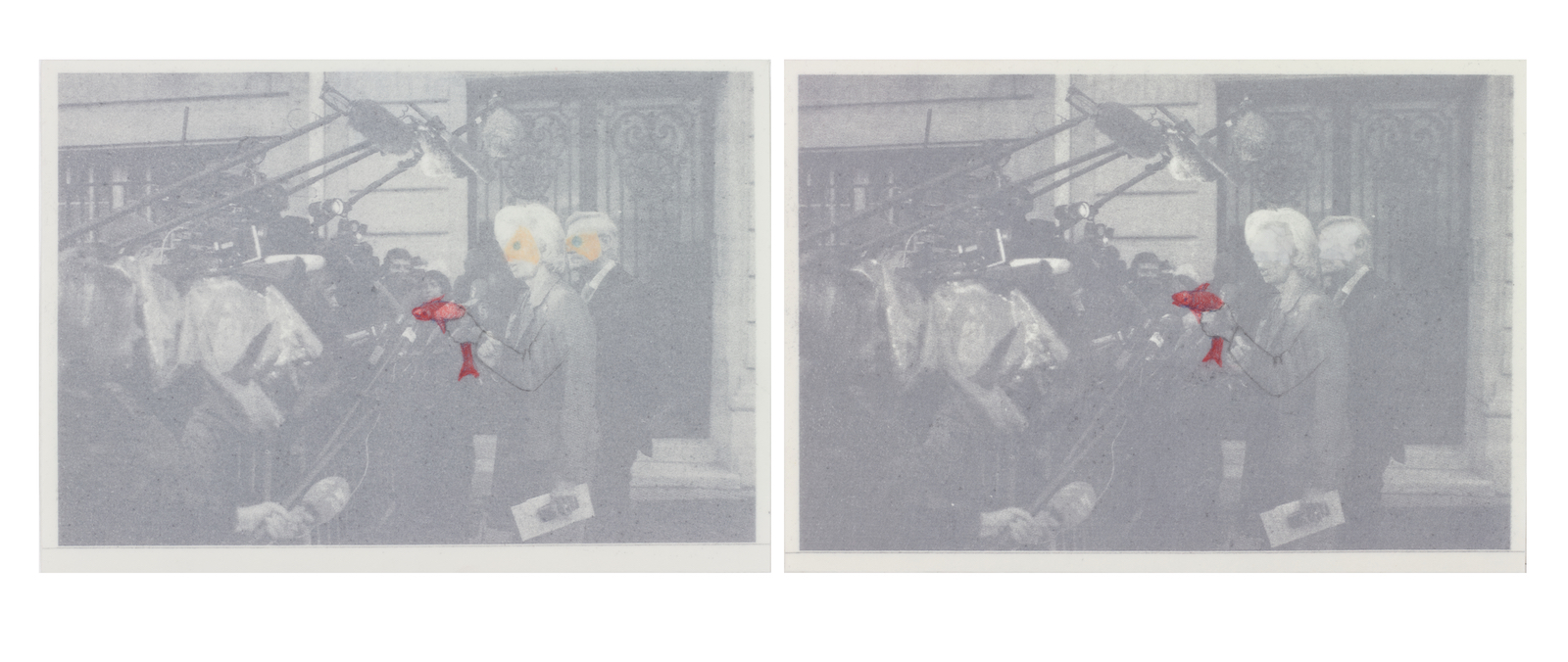
Photocopy, graphite and colour pencils on tracing paper, adhesive - diptych
10,3 x 14,7 cm (each)
Signed on bottom left of the back
Altérables is a long-term project that consists of creating a series of images with the same process: images recovered from newspapers are photocopied and then retouched by using one or more layers of transparent tracing paper. On each layer, a drawing comes duplicate, move or add an element or a contour of the original image. The transformed image is thus 'altered' and put into a different context, opening up the field of interpretation and diverting the original meaning of the source-image.

